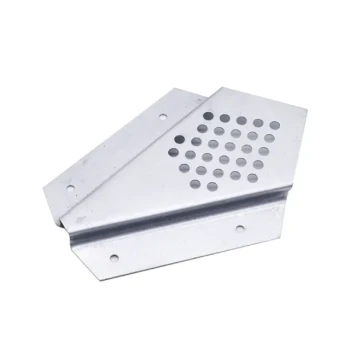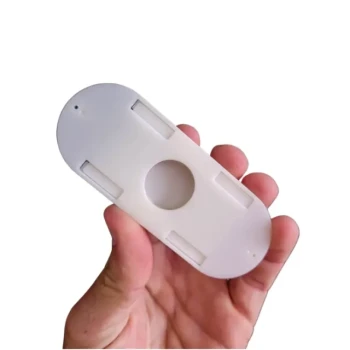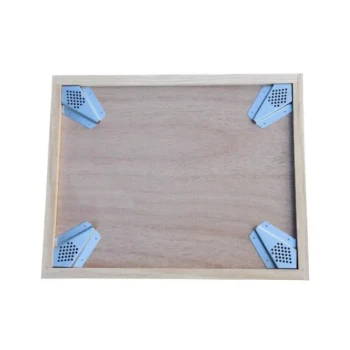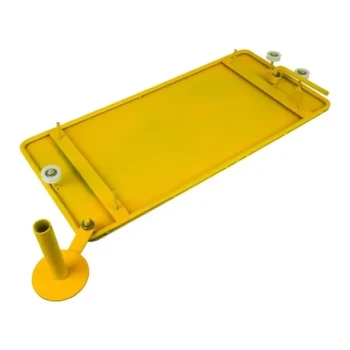To attract bees to a bee house, you do not place attractants, baits, or food inside the nesting tunnels themselves. The key is to create an inviting environment around the house that provides the three essential resources solitary bees need: food, water, and building materials. The house simply provides the empty, secure nesting structure they are seeking.
The success of a bee house has less to do with the house itself and more to do with the surrounding landscape. Think of the bee house as an empty apartment building; its appeal depends entirely on the quality of the neighborhood you provide.
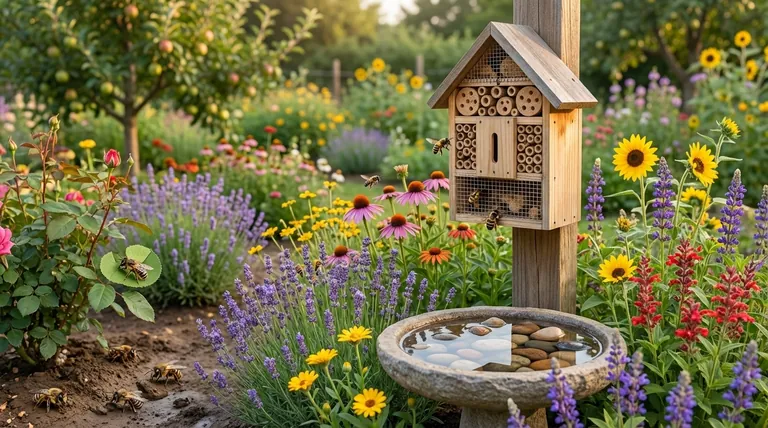
The Environment is the Attractant
Solitary bees, like mason and leafcutter bees, are the primary residents of bee houses. Unlike social honeybees, they do not have scout bees that respond to lures. Instead, a female bee searches for a suitable nesting cavity located conveniently near all the resources she needs to lay her eggs.
Provide a Reliable Food Source
A nesting female bee must make dozens of trips to collect enough pollen and nectar to provision a single egg. A bee house with no nearby food source is useless to her.
Your primary focus should be planting a variety of native, flowering plants. Native bees have co-evolved with these plants and often depend on their specific pollen. Aim for a mix that provides continuous blooms from early spring through late summer to support different bee species.
Offer Essential Building Materials
Different bees use different materials to seal their nesting chambers and protect their young. Providing these materials nearby makes your bee house a far more attractive option.
Mason bees, one of the earliest spring pollinators, use mud to build walls between each nesting cell. A patch of bare, damp soil or a small mud tray is a critical resource for them.
Leafcutter bees, active in the summer, precisely cut circular pieces from leaves to construct their nests. They favor plants with soft, thin leaves like rose, lilac, hosta, or bougainvillea.
Ensure Access to Water
All bees need water for drinking and, in some cases, for cooling or mixing with soil to create mud.
A shallow birdbath with stones or marbles for bees to land on, a dripping hose, or even a small dish filled with pebbles and water can serve as a reliable water source. Ensure the water is clean and consistently available.
Understanding the Trade-offs and Common Mistakes
Simply putting up a bee house is not enough and can sometimes do more harm than good if not managed properly.
The Myth of "Bee Cocoons"
Some suppliers sell bee cocoons to "seed" your house. While this can jump-start a population, it is not a true attractant. You are simply releasing bees that will hopefully use the house, but if the surrounding environment is poor, they will leave.
Placement is Critical
Where you hang your bee house matters significantly. It should be mounted securely to a wall or post, at least three feet off the ground, to protect it from predators like ants and birds.
The entrance should face the morning sun (south or southeast in the northern hemisphere). This helps the bees warm up quickly to begin foraging at the start of the day and protects them from the intense afternoon heat.
The Danger of a "Dirty" House
A bee house that is used year after year without cleaning can become a breeding ground for parasites, mites, and diseases that will kill the developing bee larvae.
Bee houses with removable paper tubes or stackable wood trays are superior because they can be cleaned or replaced each year. This is the single most important maintenance step for ensuring a healthy, sustainable bee population.
Making the Right Choice for Your Garden
Your strategy should be tailored to the types of bees you want to support and the resources available in your environment.
- If your primary focus is early spring pollination (for fruit trees): Prioritize attracting mason bees by providing a source of mud and planting spring-blooming native plants and trees.
- If your primary focus is summer pollination (for vegetables and flowers): Cater to leafcutter bees by ensuring plants with soft, pliable leaves are available and planting summer-blooming flowers like sunflowers and coneflowers.
- If you are a beginner with a new bee house: Start by focusing entirely on the landscape. Plant a diverse array of native flowers and ensure water is available before you worry about managing bee populations.
Ultimately, attracting native bees is an act of ecological hospitality; provide for all their needs, and they will find the home you have offered.
Summary Table:
| Essential Resource | What to Provide | Key Benefit |
|---|---|---|
| Food Source | Native flowering plants with continuous blooms from spring to fall. | Sustains nesting female bees, who make dozens of trips to provision a single egg. |
| Building Materials | Bare, damp soil for mud (mason bees); plants with soft leaves like rose or lilac (leafcutter bees). | Provides the materials bees need to construct and seal their nesting chambers. |
| Water Source | A shallow birdbath with stones or a dripping hose. | Essential for drinking and, for mason bees, mixing with soil to create mud. |
Ready to support a thriving bee population?
As a commercial apiary or beekeeping equipment distributor, providing the right habitat is key to success. HONESTBEE supplies the high-quality, durable bee houses and equipment needed to create sustainable pollinator habitats. Our wholesale-focused operations ensure you get the reliable supplies your business depends on.
Contact our expert team today to discuss your wholesale needs and how we can help you build a better environment for bees.
Visual Guide
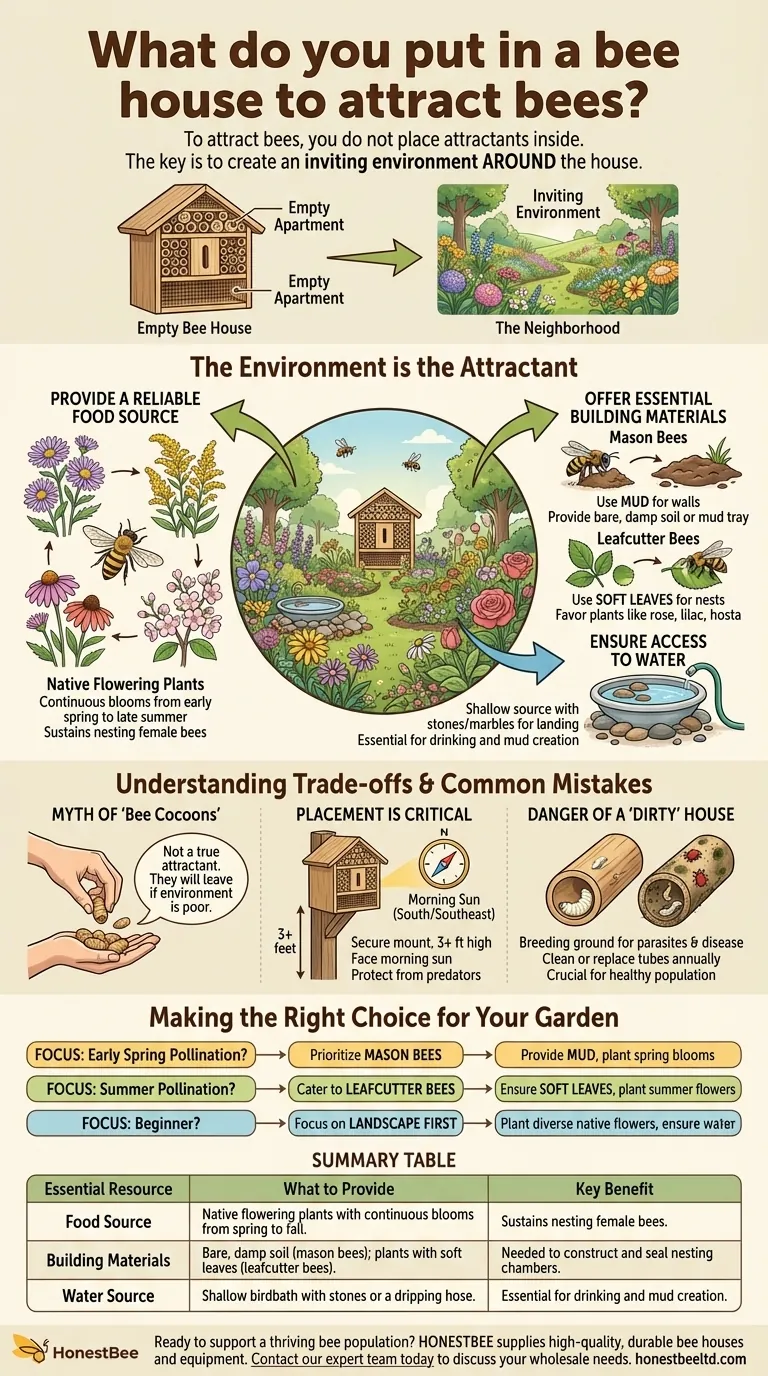
Related Products
- Food Grade Plastic bee Foundation for Bee Frames
- Heavy Duty Metal Corner Bee Escape for Reliable Hive Clearing
- Professional Galvanized Hive Strap with Secure Locking Buckle for Beekeeping
- Brown Nicot Queen Cell Cups for Breeding Queen Bees Beekeeping
- Professional Durable Two-Piece Plastic Bee Escape
People Also Ask
- What is a plastic foundation sheet? A Durable, Reusable Hive Management Solution
- Why do commercial beekeepers prefer plastic foundation? Durable, Reusable, and Cost-Effective
- How do you get bees to draw out plastic foundation? Master the Art of Comb Building
- How to get bees to use plastic foundation? Master the Wax Coating and Resource Strategy
- What additional step can improve the performance of plastic foundation in the hive? Apply a Generous Coat of Beeswax

